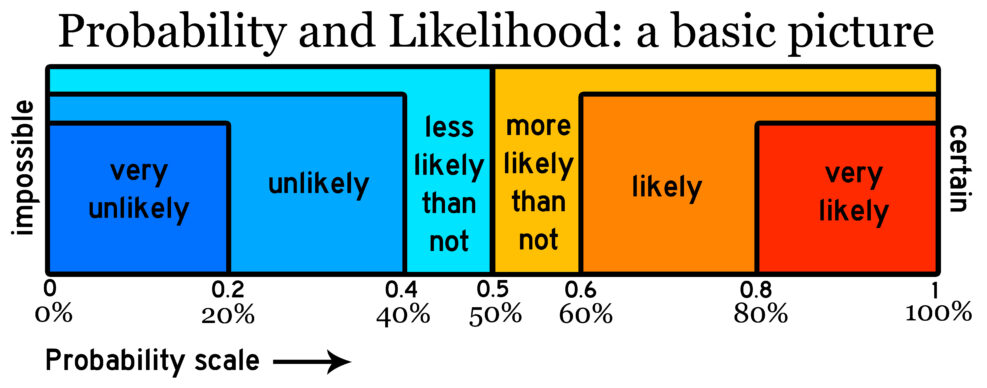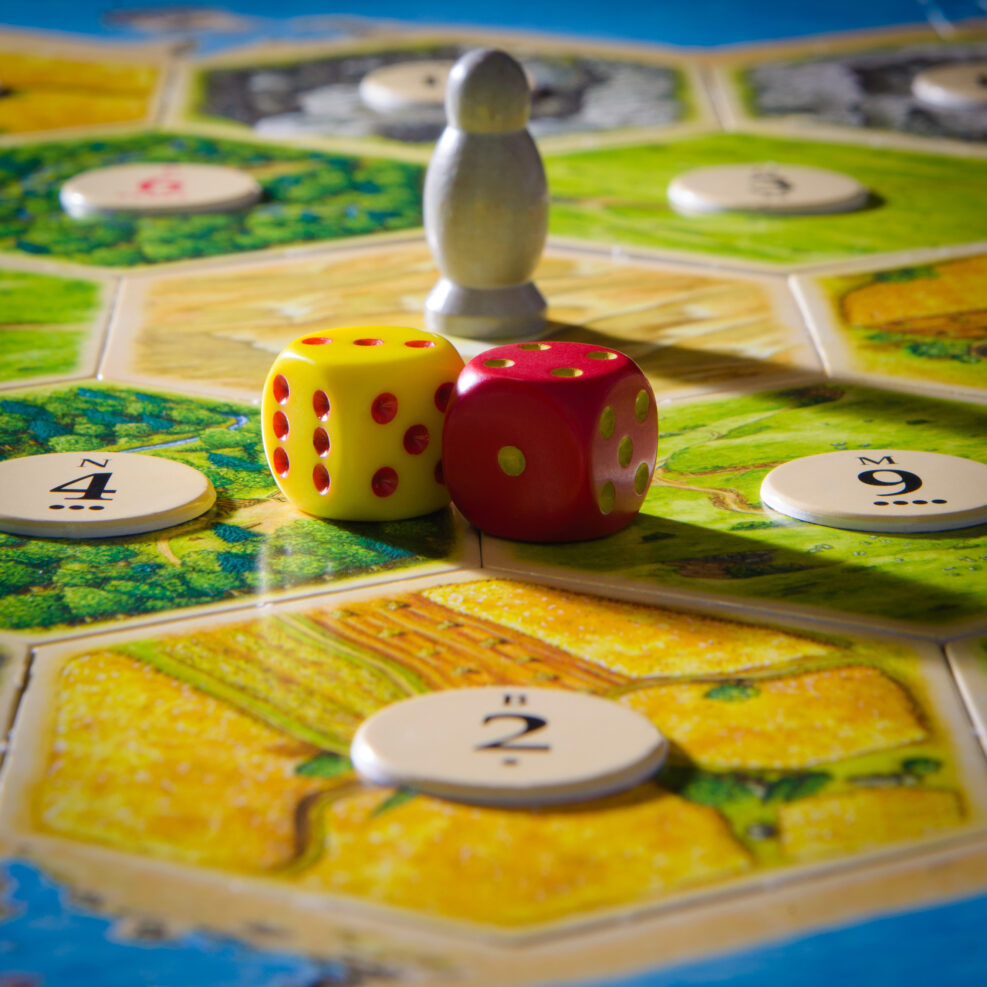
TagStatistics


CDC Neglects to Include Assisted Deaths in Official Suicide Report
Assisted dying is a form of suicide, regardless of the ways our culture has euphemized the term
Sabrina Ionescu’s Hot Hand
When basketball players hit a "streak," does that elevate the probability of success?
Using Data Like a Drunk Uses a Lamppost
Startup companies can be tempted to use statistics for support instead of real illumination
Studies Based On Data Mining Can Turn Out To Be Nonsense
As business prof Gary Smith explains at Bloomberg, we can find a great deal of nonsense if all we rely on is a search engineMany of the studies represented to us in media are not nearly as reliable as we would like to believe, as Gary Smith explains at Bloomberg. He starts with statistician John Ioannidis pointing out that of 34 “highly respected” medical studies and found that only 20 were confirmed by the Reproducibility Project.: I wrote a satirical paper that was intended to demonstrate the folly of data mining. I looked at Donald Trump’s voluminous tweets and found statistically significant correlations between: Trump tweeting the word “president” and the S&P 500 index two days later; Trump tweeting the word “ever” and the temperature in Moscow four days later; Trump tweeting the word “more” and the price of tea in China four days Read More ›

The Cult of Statistical Significance — and the Neglect of Oomph
Statistical significance has little meaning when separated from practical importanceA central part of John Maynard Keynes’ explanation of the Great Depression was his assertion that household income affects household spending. When people lose their jobs and income, they cut back on their spending, which causes other people to lose their jobs and their income — propelling the economy downhill. Keynes’ theory was based on logic and common sense. It was later tested empirically with household survey data and with national income data compiled by the National Bureau of Economic Research. Figure 1 shows U.S. after-tax personal income and consumer spending for the years 1929 through 1940. Since income and spending both tend to grow over time along with the population, the data were converted to annual percentage changes. The observed statistical Read More ›

Fine-tuning? How Bayesian Statistics Could Help Break a Deadlock
Bayesian statistics are used, for example, in spam filter technology, identifying probable spam by examining vast masses of previous messagesIn the earlier part of podcast episode 150, “Ours is a finely tuned — and No Free Lunch — universe,” Swedish mathematician Ola Hössjer and University of Miami biostatistician Daniel Andrés Díaz-Pachón discussed with Walter Bradley Center director Robert J. Marks the many ways in which the universe is finely tuned for life. Many theorists are not happy with the idea of fine-tuning because they are uncomfortable with its theistic implications. In this second portion of the episode, they discuss how a method of estimating probability called Bayesian statistics or Bayes theorem could help break a deadlock around fine-tuning: https://episodes.castos.com/mindmatters/Mind-Matters-Episode-150-Hossjer-Diaz-.mp3 This portion begins at 13:00 min. A partial transcript, Show Notes, and Additional Resources follow. Robert J. Marks: Bayes’ theorem Read More ›

Steph Curry Got Red Hot and Torched the “Hot Hand Fallacy”
Many statisticians dismiss remarkable streaks like his as the Hot Hand Fallacy. Are they right?
AI Dirty Dozen 2020 Part II
There are many forces that shape the hyped AI stories we read. Media is everywhere and competition is fierce. Articles with provocative headlines and content are clickbait for the browsing consumer. We’re going to count down the AI Dirty Dozen: the top twelve AI hyped stories for 2020. Join Dr. Robert J. Marks as he discusses some of these stories with Read More ›

How Bayes’ Math Rule Can Counter Unreasonable Skepticism
Mathematics is much more interesting if we know a bit about the players and their positionsYesterday, we discussed the importance of Bayes’ rule in statistical reasoning. We used the example of a person who goes for a battery of screening tests and comes up positive for HIV. Let’s say she is surprised (and alarmed) because she is not at any known risk for HIV. But, it turns out, the risk of false positives for the test is several times greater than the incidence of HIV in the population. In that case, it is reasonable for her to suspect—on a statistics science basis, not just wishful thinking—that the test is a false positive. The formula we used is part of Bayesian reasoning, originally developed by an eighteen-century British clergyman and mathematician Thomas Bayes (1702–1761), but now Read More ›

The Wisdom of Crowds: Are Crowds Really Wiser Than Individuals?
According to the theory, with a large number of guessers, the median number is very likely to be close to the true valueStatistician Sir Francis Galton went to a country fair in 1907 where a prize was to be awarded to the person who made the most accurate guess of the butchered weight of an ox that was on display. Galton collected and analyzed the 787 guesses and, not surprisingly, found that some guesses were far too high and others were much too low. However, the average guess (1,197 pounds) was only 1 pound lower than the actual weight (1,198 pounds). The average was more accurate than the guesses of the vast majority of both the amateurs and the experts. In the 1980s, a finance professor named Jack Treynor (1930–2016) performed a similar, and now legendary, experiment with jelly beans. Professor Treynor Read More ›

Why Intelligent Women Marry Less Intelligent Men
Are they trying to avoid competition at home as well as at work? Or is there a statistical reason we are overlooking?When I read that Ruth Bader Ginsburg’s late husband was a wonderful man but less accomplished than his wife, I was reminded of “Ivy,” one of the most impressive students I ever had the privilege to teach. Ivy excelled in her coursework, won a prestigious scholarship for postgraduate study in England, went to a top-five law school, clerked for a Supreme Court Justice, and is now a law professor at a great university. Like Ruth Ginsberg (1933–2020, pictured), Ivy married a man who is very nice but less intelligent than she. This is not an unusual situation. I made a list of the dozen most intelligent female students with whom I’ve kept in touch over the years. These women are Read More ›

In Science, We Can’t Just “Settle” for Data Clusters
The board game, Settlers of Catan, offers a clear illustration of what can go wrong when we are duped by data clustersSettlers of Catan is an incredible board game created by Klaus Teuber, a German game designer. It has been translated into dozens of languages and tens of millions of sets have been sold. The basic four-player board consists of 19 hexagons (hexes) representing resources: 3 brick, 4 lumber, 4 wool, 4 grain, 3 ore, and 1 desert. Players acquire and use resources based on dice rolls, card draws, trading, and the location of their settlements and cities. Part of the game’s seductive appeal is that there are many, many ways to arrange the 19 hexagons and successful strategies depend on how the hexagons are arranged. The rules are simple but winning strategies are complex and elusive. The official rules of Read More ›

What Happened When 1950s China Dreamed of “Total Information”?
When China rejected random sampling in favor of exhaustive enumeration of individuals, masses of “data” flooded in, but what did it mean?A historian of modern China recounts the outcome of a momentous decision that China’s new Communist rulers made in the 1950s. They decided to abandon conventional methods of gathering statistics that use probability and adopted the method of exhaustive counting of everybody and everything. Why did their dream of total information became a nightmare? Harvard historian Arunabh Ghosh (right), author of Making It Count: Statistics and Statecraft in the Early People’s Republic of China (2020), explains that in the 1950s, newly communist China faced a choice about how to survey the population accurately while making “a clean break with the past.” For philosophical reasons, debates about how to gather statistics came to the fore: In a speech in 1951, Li Read More ›

Making Sense of the Numbers Behind COVID-19
Media and politicians put statistics before us to sway our opinions. But what do they really mean?Numbers can frighten or enlighten. The secret is making them explain themselves. Here’s a quick primer.
Read More ›
Why Does COVID-19 Target the Northern Hemisphere?
A graph of death rates by latitude is revealingFirst of all, COVID-19 clearly does not attack the globe uniformly by latitude. The second standout feature is that it targets the northern hemisphere. How can a disease’s spread be affected by hemisphere, let alone latitude? Let’s look a little deeper for some clues.
Read More ›
Polly Want a … Statistician?
Ethology, the science of animal behavior, offers interesting data but the interpretations are too often witlessCan birds really do statistics? A reporter writing up the results of a study for a popular science magazine seems to think so. The researchers are (appropriately) more cautious. But what are the issues here?
Read More ›
Is “Hot Hands” Just a Basketball Myth?
Not so fast…The paper that busted the myth of “hot hands” is justly famous. But statisticians are not prophets. Craig Hodges’ streak of 19 in a row in the 1991 contest is still too incredible to be explained by luck or cherry-picking. The numbers show that hot hands don’t happen every day, but they do happen.
Read More ›
Can The Machine TELL If You Are Psychotic or Gay?
No, and the hype around what machine learning can do is enough to make old-fashioned tabloids sound dull and respectableMedia often co-operate with researchers’ inflated claims about machine learning’s powers of discovery. An ingenious “creative” approach to accuracy enables the misrepresentation, says data analyst Eric Siegel.
Read More ›
The World Series: What the Luck?
Who will win the World Series? I don’t know, but I do know that baseball is the quintessential game of luckThink about it. Line drives hit right at fielders, mis-hit balls dying in the infield. Fly balls barely caught and barely missed. Balls called strikes and strikes called balls. Even the best batters make twice as many outs as hits. Even the best teams lose more than a third of their games. This season, the Houston Astros had the highest win percentage (66.0%) in baseball, yet they lost two out of six games to Baltimore, which only won a third of their games—not because Baltimore was the better team, but because Baltimore was the luckier team in those two games. The Astros are one of the 10 best teams this season (along with the Yankees, Tampa Bay, Minnesota, Cleveland, Oakland, Read More ›